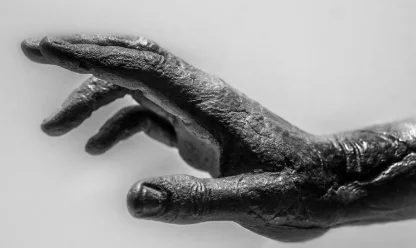Art has always been an essential part of human culture a way for civilizations to express their beliefs, stories, and creativity. Among countless visual relics, “ancient artz” remains a fascinating topic, symbolizing the cultural mastery of bygone eras. Every brushstroke, carving, and sculpture serves as a window into the worldview of ancient civilizations, reflecting their values, religious beliefs, and daily lives.
This blog explores the beauty of ancient artz by uncovering its historical significance, iconic forms, and enduring legacy. Whether you’re an artist, a history enthusiast, or someone curious about how modern creativity is shaped by the past, prepare to be inspired by humanity’s timeless relationship with art.
Why Ancient Artz Matters Today
Art is more than aesthetics; it captures the essence of an era. But why does ancient artz, in particular, continue to hold such sway over modern hearts and minds?
Preserving History and Culture
Ancient artz acts as a historical archive. Unlike written texts limited by literacy barriers, art gives a visual narration of life how people lived, what they valued, and their interpretations of the human experience. For instance, the cave paintings of Lascaux, France, dating back over 17,000 years, depict majestic bulls and horses, reminding us of humanity’s connection to nature and survival.
Shaping Modern Art and Design
Modern art draws significant inspiration from ancient symbols, techniques, and innovation. Whether it’s Greek sculptures inspiring contemporary statues or Egyptian hieroglyphs influencing typography design, the echoes of ancient artz persist. A great example is Pablo Picasso borrowing from African tribal art, which shaped his revolutionary Cubism style.
Encouraging Intergenerational Storytelling
Through ancient artz, we can connect the dots between different generations by reviving their stories. From tribal masks to medieval frescoes, each artistic output invites us to honor the vibrancy of human history.
Exploring Iconic Forms of Ancient Artz
Cave Paintings
Cave paintings are among humanity’s earliest artistic expressions, dating back to prehistoric times. Found across continents from Chauvet Cave in France to Bhimbetka in India they depict animals, hunting scenes, and stenciled human hands. Using pigments derived from natural minerals, these artists conveyed both practical rituals and spiritual beliefs.
Sculptures and Monuments
No exploration of ancient artz is complete without marveling at sculptures. Ancient Egyptian statues, such as the Great Sphinx of Giza, display technical prowess unmatched for millennia. Meanwhile, the classical busts and marble sculptures of Greco-Roman societies offer timeless prototypes of beauty, anatomy, and proportion.
Pottery and Ceramics
Ancient pottery tells more than aesthetic stories it captures the lifestyles of civilizations. The intricate designs of Chinese Tang Dynasty vases or the iconic red-and-black pottery of ancient Greece blend function and style while portraying myths, trading practices, and religious iconography.
Mosaics
Mosaics, which use small tiles arranged to create intricate designs, found popularity in the Byzantine and Roman world. Often seen in sacred spaces like churches or palaces, mosaics described divine stories or symbolized imperial power, leaving behind vibrant works that have enchanted viewers for centuries.
Textiles and Fabric Art
The art of weaving, embroidery, and dyeing textiles was highly advanced in ancient societies like India, Peru, and Mesopotamia. From Persian carpets to Chinese silk brocades, fabric pieces were symbolic of social hierarchies, trade routes, and meticulous craftsmanship.
The Legacy of Ancient Artz in the Modern World
The relevance of ancient artz becomes increasingly evident in ways that continue to inspire modern society, illustrating unbroken threads of continuity.
Architecture Inspired by Ancient Principles
Modern architecture frequently draws upon ancient influences. Greek columns are echoed in neoclassical landmarks like The White House, while Maya pyramids inspire stair-step skyscrapers. Builders and artists today expand upon ancient motifs, melding tradition with innovation.
Cultural Renaissance Through Art Museums
Highly revered exhibits in museums like the Louvre, British Museum, or Cairo Museum display thousands of ancient relics. These institutions give admirers students, creatives, global audiences a unique opportunity to learn about these irreplaceable treasures and continue their appreciation.
Incorporation in Pop Culture
From video games recreating ancient Babylon to Marvel movies depicting Wakandan art reminiscent of ancient African styles, elements of ancient artz thrive in entertainment. This proves not only its aesthetic allure but also its capacity to tell stories that resonate universally.
How to Explore Ancient Artz Personally
If you’re eager to immerse yourself in ancient artz, here are four steps to deepen your appreciation and integrate its timeless charm into your interests or creativity.
Visit Museums
A visit to renowned museums like The Met or the Vatican Museums provides unparalleled access to artifacts that have shaped human civilization.
Engage with Online Resources
Platforms like Google Arts & Culture provide virtual tours of archaeological sites and digital showcases of historical collections. Perfect for exploring ancient artz right from your living room!
Recreate Ancient Techniques
Whether experimenting with pottery or trying mosaics, give ancient techniques a modern spin. Workshops or hobby clubs often introduce enthusiasts to heritage-inspired crafts.
Educate Communities
Finally, share your passion. Whether it’s via a classroom, social post, or neighborhood art talk, help others recognize ancient artz’s significance alongside your personal discoveries.
Timeless Stories, Eternal Inspiration
Ancient artz is a canvas that bridges traditions to aspirations. It celebrates more than aesthetics telling stories etched into caves or carved into stone that inspire today’s architects, designers, and storytellers.
As you continue exploring the remnants of humanity’s creative past, remember that you, too, contribute to this ongoing narrative adding your mark to a long history of artistic evolution.





